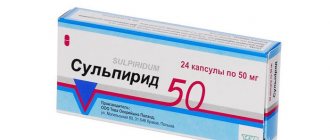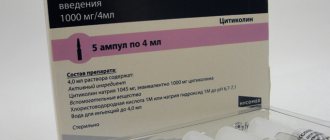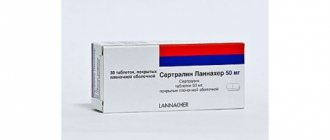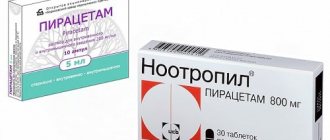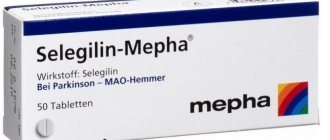Modern living conditions force most of us to be in a state of constant stress, which cannot but have a negative impact on our health, both physical and psychological. Increasingly, the tension becomes so strong and the condition so severe that the situation forces a person to seek professional help, since he is no longer able to cope with stress on his own.
Alarming symptoms that, as a rule, do not go unnoticed are disturbances in sleep and wakefulness, extreme manifestations of emotions, and inability to lead a previous lifestyle. It is important to consult a doctor in time, who will be able to provide the necessary assistance by drawing up a competent treatment regimen and prescribing the necessary medication. Many people consider the drug Valdoxan effective. Reviews from people about how they feel after using this drug will be described in detail in this article. Among other things, it will answer the following questions: what is the principle of action of the drug in question? In what cases would it be rational to use it? What are the potential side effects? Be careful and don't miss a single detail.
Valdoxan - active ingredient, daily dosage of antidepressant, contraindications and reviews
Taking Valdoxan is justified if the course of treatment is prescribed by a doctor. According to the instructions, the drug is not harmless and has a lot of contraindications, which is important for patients to take into account. The medicine is not recommended for children and adolescents; use the antidepressant with caution in persons over 65 years of age, patients with suicidal tendencies, manic-depressive psychoses, and alcoholics. Valdoxan is prohibited for use if the patient:
- lactose intolerance;
- renal failure;
- ailments for which inhibitors of the CYP1A2 isoenzyme are used;
- susceptibility to the components of the drug
Valdoxan is a very powerful antidepressant. Indications for the use of this drug are depressive disorders, which are accompanied by:
- lack of appetite;
- severe anxiety;
- disturbed sleep;
- decreased performance;
- depressed state;
- thoughts of suicide;
- constant blues.
The antidepressant Valdoxan is used in the treatment of the following disorders:
- depressive states accompanied by despair, apathy, helplessness, irritability;
- anxiety disorders;
- severe stress;
- major depressive disorder;
- disorders of the nervous system due to depression.
The official instructions indicate that Valdoxan is contraindicated for use in the following cases:
- galactosemia (lactose intolerance);
- malabsorption of galactose or glucose;
- lactase deficiency;
- liver pathologies in the acute stage;
- age up to eighteen years;
- hypersensitivity to any component of the drug;
- breast-feeding.
Also, a limitation to taking tablets is the simultaneous use of the drug with Fluvoxamine and Ciprofloxacin, which are powerful isoenzyme inhibitors.
The drug is prescribed with caution and under medical supervision to patients of advanced age, with renal failure, diabetes mellitus, obesity, alcohol abuse, manic behavior and suicidal thoughts. When carrying a child, the medicine should also be taken carefully.
The drug should not be used in the following cases:
- In case of hypersensitivity to agomelatine and other excipients;
- For lactose intolerance – galactosemia, lactase deficiency, glucose/galactose malabsorption syndrome;
- In severe liver failure - various liver diseases in the active phase;
- Simultaneous use with strong inhibitors of the CYP1A2 isoenzyme - ciprofloxacin, fluvoxamine;
- Children under 18 years of age;
- Women during breastfeeding.
Valdoxan is prescribed with caution to patients:
- with a history of manic and hypomanic syndrome;
- patients who had suicidal thoughts before treatment or a history of suicidal events;
- taking drugs with hepatotoxic effects and other risk factors for liver dysfunction (including obesity, fatty hepatosis and diabetes mellitus);
- elderly patients over 65 years of age;
- during pregnancy;
- with alcoholism.
The drug is considered an effective and powerful antidepressant that acts specifically without affecting important organs. Valdoxan eliminates anxiety attacks, normalizes sleep, and after a course of treatment normal appetite returns. Doctors note that the medication has a beneficial effect on the body, which is confirmed by positive reviews from patients.
Articles on the topic
- Azafen - instructions for use of tablets, composition, indications, side effects, analogues and price
- Cipralex - instructions for use, indications, active substance, side effects, analogues and price
- Mebikar - instructions for use of tablets, composition, indications, side effects, analogues and price
used to treat patients suffering from major depressive disorder.
Contraindicated in patients with hypersensitivity to agomelatine or additional components of the tablets, with lactose intolerance, in the treatment of patients suffering from liver failure, as well as patients receiving drugs that inhibit the CYP1 A2 isoenzyme (see Interactions with other drugs), in pediatric practice.
Caution should be exercised when prescribing Valdoxan to elderly patients, as well as patients with major depressive episodes in renal failure and dementia, with a history of manic and hypomanic syndrome, patients who had suicidal thoughts before starting treatment or suicidal events in the anamnesis, with alcoholism, taking drugs with hepatotoxic effects and other risk factors for liver dysfunction (including obesity, fatty liver disease and diabetes mellitus).
It is not recommended to drive a car or operate potentially unsafe mechanisms during therapy with Valdoxan (especially at the beginning of therapy, when the risk of dizziness and drowsiness is increased).
The drug is an agonist of melatonin and serotonin receptors. Active ingredient: agomelatine. The antidepressant is suitable for the treatment of nervous and stressful conditions, and relief from anxiety.
https://www.youtube.com/watch?v=Tk2kMmHU_vc
Agomelatine enhances the release of dopamine and norepinephrine and restores synchronization of circadian rhythms. The drug helps normalize sleep (promoting the release of melatonin) and lower body temperature.
Recommended duration of therapy: 6-8 weeks, 25-50 mg.
Valdoxan is available in the form of tablets, each of which is coated with an orange-yellow coating. The main active substance is agomelatine. It is an antagonist of serotonin and melatonin receptors.
| Film-coated tablets | 1 PC. |
| Active substance: agomelatine. | 25 mg |
| Excipients: magnesium stearate (1.3 mg); lactose monohydrate (61.84 mg); corn starch (26 mg); povidone (9.1 mg); colloidal silicon dioxide (0.26 mg); stearic acid (2 .6 mg); sodium carboxymethyl starch (3.9 mg). | |
| Film coating: hypromellose (3.26871 mg); glycerol (0.19665 mg); dye (yellow iron oxide) (0.19509 mg); titanium dioxide (0.43418 mg); macrogol 6000 (0.20872 mg); magnesium stearate (0.19665 mg). | |
| The company logo is applied to the tablet with blue paint, which contains: propylene glycol, aluminum varnish and shellac. |
Agomelatine is an agent that improves symptoms in a validated model of depression. It is also effective for other disorders of the nervous system.
Agomelatine is distinguished by the absence of pronounced negative aspects in its effects on the organs of the human body. It helps improve sleep, produces melatonin, and slightly reduces body temperature.
Agomelatine is quickly absorbed by the body, reaching maximum concentrations 1-2 hours after administration. Almost the entire volume of the drug combines with plasma proteins and is distributed throughout the body. It is easily excreted through renal metabolites and in the urine. Bioavailability increases if you take contraceptives and decreases with smoking.
Contraindications
The instructions and reviews of Valdoxan recommend paying special attention to what contraindications the drug in question has. In some cases, the use of this drug is undesirable or even prohibited. It is important to know for sure whether you are also at risk so that treatment with the drug in question does not harm you. So, in what cases are doctors’ reviews and instructions prohibiting the use of Valdoxan? The following are distinguished:
- personal intolerance or allergy to the main active ingredient of the drug agomelatine;
- childhood;
- the patient's lactose intolerance;
- if some strong CYP1A2 inhibitors, such as ciprofloxacin or fluvoxamine, are used simultaneously;
- in the presence of liver failure (including liver diseases in the active phase or cirrhosis);
- period of breastfeeding (if it is still impossible to do without treatment with the drug in question, then breastfeeding should be stopped).
In some cases, the use of this medication, although possible, should be done with caution under the supervision of an experienced physician. We are talking about the following options:
- the patient is elderly (meaning people over 65 years old);
- there have been previous suicide attempts;
- the patient abuses alcohol or is prone to such excesses (as reviews note, Valdoxan and alcohol are incompatible);
- the course of treatment also includes moderate inhibitors of CYP1A2 (we are talking about substances such as grepafloxacin, propranolol or enoxacin);
- the presence of dementia in an elderly patient;
- have previously had manic or hypomanic episodes;
- developing pregnancy;
- use of any hepatotoxic drugs;
- in the case of major depressive episodes in patients who have moderate or severe renal failure.
If you know you have one or more of the conditions listed above, tell your doctor. This will help him correctly draw up a treatment plan that takes into account all your individual characteristics. Such an appointment will become truly effective.
Mode of application
intended for internal use. Film-coated tablets should be swallowed whole without crushing. Valdoxan is taken regardless of food intake. It is recommended to take agomelatine in the evening. If you miss the next dose, you should take the tablet as early as possible, but if it is already time for the next dose, you should not double the dose (do not take the missed tablet). To make it easier to control intake, a calendar is placed on the blister.
The duration of therapy and dose of Valdoxan is determined by the doctor.
The average recommended daily dose is 25 mg of agomelatine (1 tablet of Valdoxan). If the therapeutic effect is insufficient, 2 weeks after the start of treatment, the dose of agomelatine can be increased to 50 mg per day (2 tablets of Valdoxan in the evening).
During therapy with Valdoxan, it is recommended to monitor liver function (as a rule, samples are taken before starting therapy, as well as 3, 6, 12 and 24 weeks after starting treatment). Also, monitoring of liver function is necessary when increasing the dose of agomelatine.
To completely stop symptoms and prevent relapse, treatment for clinical depression should be carried out for at least 6 months. Upon termination of therapy with agomelatine, a gradual dose reduction is not required.
special instructions
During pregnancy, the drug should be taken with caution. During treatment, you must stop breastfeeding. It is important to monitor liver function while taking the pills. There have been cases of damage to this organ (including liver failure, hepatitis, jaundice). Violations are possible in the first months of therapy.
It has not been established whether Valdoxan is effective for older people (75 years of age and older), so this category of patients should not take the medicine. The same applies to pensioners with dementia. Caution should be exercised when treating patients with renal failure and bipolar disorders. The latter should stop taking the drug if manic symptoms occur.
With depression, thoughts of suicide may occur; they persist even in the early stages of remission, so it is important for such patients to be treated under the supervision of a doctor. Clinical studies show that taking antidepressants in patients under 25 years of age with mental disorders leads to a risk of suicidal behavior. They should be monitored if the dosage is changed.
Caution should be exercised when using Valdoxan simultaneously with moderate inhibitors of the CYP1A2 isoenzyme (propranolol, enoxacin), since the concentration of agomelatine may increase. Patients with lactose intolerance should not take an antidepressant. It should be borne in mind that after taking the drug, drowsiness and dizziness are possible; these side effects can affect the reaction speed when driving a car.
- Valproic acid
- Rexetine - instructions for use in tablets, composition, indications, side effects, analogues and price
- How to take the drug Deprenorm in tablets - composition, indications, dosage, analogues and price
Storage conditions and shelf life
The shelf life of the drug is 3 years from the date of manufacture. It is recommended to store tablets away from children at a temperature not exceeding 25 degrees.
Antidepressant Valdoxan: instructions for use and reviews from people - tips and recommendations on News4Health.ru
Life in the modern world is replete with many factors that negatively affect human health. The main ones are poor ecology, questionable quality of food, contaminated drinking water, poor quality medical care, as well as stressful situations and bad habits. Therefore, it is so important to pay attention to regular healing of the body using various methods and means. Be sure to consult a specialist so as not to harm your health!
Side effects
When using Valdoxan, certain adverse reactions may develop:
- Organ of vision: blurred vision;
- Organ of hearing: tinnitus;
- Musculoskeletal system: back pain;
- Central nervous system: fatigue, paresthesia, headaches, sleep disturbances, dizziness, migraine.
- Skin and subcutaneous tissue: sweating, eczema, urticaria, facial swelling, Quincke's edema, itching, erythematous rash;
- Digestive tract: stool disorders, nausea. stomach pain, hepatitis, jaundice, increased activity of liver enzymes, GGT, AST and ALT, liver failure.
- Mental disorders: anxiety, agitation (irritability, aggressiveness, restlessness, unusual and nightmares, mania/hypomania), hallucinations, suicidal thoughts or behavior;
- Other: fatigue, weight gain or loss.
Isolated cases of agitation, aggression, nightmares and unusual dreams, mania/hypomania, as well as hallucinations and suicidal thoughts have been reported. Undesirable effects usually do not require discontinuation of the drug and the prescription of specific therapy.
When taking excessive doses of agomelatine, patients experienced the development of epigastric pain, drowsiness, restlessness, anxiety, weakness, agitation, tension, cyanosis and dizziness.
The antidepressant effect on the body is provided by the active ingredient of the drug - agomelatine. It is an antagonist of melatonin and serotonin receptors.
This medicine is effective for:
- chronic moderate stress,
- despair,
- irritability,
- disorder of biological rhythms.
It is often prescribed in extreme situations accompanied by high anxiety. As people’s reviews of the drug “Valdoxan” testify, they feel good after it. The medicine is very effective in normalizing sleep.
The drug promotes the release of the pineal gland hormone melatonin. The substance regulates circadian rhythms and lowers body temperature.
The drug is prescribed to patients diagnosed with prolonged depressive episodes. Often for a period of 6 to 8 weeks.
The medicine is also very effective against more severe forms of depressive disorders. It is perfect for patients who initially have a high level of anxiety.
The antidepressant anti-relapse property of agomelatine has been confirmed during clinical studies. The patients took the medicine once a day for 6 months. Only 22% of all participants experienced disease recurrence.
People’s reviews very often talk about the absence of negative effects on attentiveness and memory (while using the drug “Valdoxan”). The feeling after it, according to most patients, is never accompanied by lethargy.
The medicine promotes rapid onset of sleep and significantly improves its quality. The drug is not addictive and has no withdrawal symptoms. It does not have a negative effect on blood pressure or body weight.
As a result of combined use of Valdoxan with isoenzyme inhibitors, such as Fluvoxamine, a slowdown in the metabolism of agomelatine may occur, contributing to an increase in its content in the blood. The use of these drugs at the same time is unacceptable. Rifampin, which affects the metabolism of agomelatine, reduces its effectiveness.
A drug
From the digestive system: nausea, stool disorders, epigastric pain.
From the nervous system: sleep disturbance, increased fatigue, dizziness, paresthesia, migraine and headache.
Side effects
The use of Valdoxan may lead to the development of certain side effects. Some of them can be extremely unpleasant, while others can even be dangerous. It is important not to neglect the fact of their appearance and seek help in time. To do this, you need to know exactly what to look for. Some of the most common side effects include:
- decreased clarity of vision;
- development of excessive drowsiness or, conversely, insomnia;
- the appearance of obsessive nausea;
- noticeable abdominal pain;
- severe back pain;
- migraine;
- heavy sweating;
- liver dysfunction (eg, hepatitis, jaundice or liver failure);
- feeling of anxiety;
- feeling of anxiety;
- the occurrence of suicidal thoughts;
- committing suicide attempts;
- development of constipation or diarrhea;
- recurring nightmares;
- dizziness;
- itching of the skin;
- irritability;
- the occurrence of unusual dreams;
- headache;
- constant fatigue;
- noticeable aggressiveness;
- paresthesia;
- the occurrence of hallucinations;
- a sharp decrease or increase in the patient’s weight;
- a state of strong emotional arousal (or agitation);
- eczema;
- development of mania or hypomania;
- the appearance of an erythematous rash.
Don't ignore these symptoms. Timely assistance from a specialist will help to significantly reduce their manifestation and avoid negative consequences for the patient’s health. Be especially attentive to your health while using the drug in question.
Use during pregnancy and lactation
Experience with the drug
in pregnant women is insufficient. Particular caution should be exercised when prescribing Valdoxan to pregnant women.
If it is necessary to use agomelatine during lactation, the issue of stopping breastfeeding should be decided before starting Valdoxan (during animal studies it was found that agomelatine passes into breast milk).
There are no or limited data on the use of agomelatine during pregnancy (less than 300 pregnancy outcomes).
As a precaution, it is recommended to avoid prescribing Valdoxan during pregnancy. If treatment with agomelatine is necessary, breastfeeding should be discontinued.
Animal studies have not revealed direct or indirect harmful effects on pregnancy, embryonic and fetal development, labor and postnatal development. As a precaution, it is recommended to avoid prescribing Valdoxan during pregnancy.
It is not known whether agomelatine passes into breast milk in women during lactation. Experimental studies on animals have shown that agomelatine and its metabolites pass into breast milk. If treatment with agomelatine is necessary, breastfeeding should be discontinued.
Interaction with other drugs
The medicine "Valdoxan" is produced in the form of tablets. Each pill is covered with an orange-yellow coating. The active ingredient of the drug is agomelatine. It is this component that ensures the effective effect of the drug “Valdoxan” on the body. Patient reviews especially emphasize achieving excellent results.
In addition to the main ingredient, the medicine contains excipients:
- magnesium stearate,
- corn starch,
- stearic acid,
- lactose monohydrate,
- povidone,
- colloidal silicon dioxide,
- sodium carboxymethyl starch.
Overdose
Data on drug overdose
limited. When taking excessive doses of agomelatine, patients experienced the development of epigastric pain, drowsiness, restlessness, anxiety, weakness, agitation, tension, cyanosis and dizziness. When taking 2450 mg of agomelatine, the patient's condition returned to normal on its own without adverse events from laboratory parameters and the cardiovascular system.
A specific antidote is unknown. In case of overdose, gastric lavage is performed. In addition, in case of overdose, monitoring the patient's condition and prescribing symptomatic therapy if necessary is indicated.
During hemodialysis, plasma concentrations of agomelatine do not decrease.
After conducting research, isolated cases of overdose were recorded. The body of patients with minor drug poisoning returns to normal on its own, without serious disturbances in the functioning of the cardiovascular system or changes in laboratory tests. Antidotes for the treatment of overdose are unknown. Doctors recommend hospitalization for observation and monitoring. The following symptoms indicate an overdose:
- restlessness, anxiety;
- drowsiness, weakness, dizziness;
- stomach ache;
- excessive stress;
- cyanosis.
Possible side effects of Valdoxan and overdose
Side effects in patients receiving Valdoxan were reported infrequently. As a rule, they occurred at the very beginning of therapy and completely disappeared after 14 days. In most cases, discontinuation of the medication if minor ailments appear and there is no tendency to increase their intensity is not required.
So, side effects from taking Valdoxan may appear:
- dizziness;
- nausea;
- dry mouth;
- diarrhea;
- gastralgia;
- skin itching.
These are the most common adverse reactions that occur in half of patients taking these pills. Less common, but possible occurrence:
- paresthesia;
- increase in AST 3 times higher than ULN;
- dermatitis;
- eczema;
- erythematous rashes;
- visual disturbances (in particular, blurred vision).
The type and frequency of adverse reactions does not depend on the age or gender of the patient.
Data on overdose with Valdoxan are limited. If the dosage prescribed by the doctor is strictly followed, patients do not experience any ailments, except for the previously described side effects. However, if an overdose has occurred, this may be indicated by symptoms such as:
- drowsiness;
- intense epigastric pain;
- apathy;
- lethargy;
- general malaise;
- deterioration of psycho-emotional state, depression or deepening of depression;
- weaknesses;
- increased anxiety;
- agitation;
- tension;
- dizziness;
- cyanosis;
- general malaise.
There is no specific antidote for agomelatine. A patient with an overdose of Valdoxan is recommended to be hospitalized in a hospital, followed by symptomatic therapy. Throughout this period, it is necessary to monitor vital signs and record the general functioning of the patient’s body.
See also:
Selectra - instructions for use, reviews from patients and doctors, analogues
Release form and composition
Film-coated tablets
14 pieces each in blister packs, 1, 2 or 7 blister packs are included in a cardboard pack.
10 pieces in blister packs, 10 blister packs are included in a cardboard pack (packaging for hospitals).
The medicine is available in the form of oblong, orange-yellow tablets with a film coating. On one side of each tablet there is a blue company logo.
- The active ingredient of Valdoxan is agomelatine in a dosage of 25 mg.
- Auxiliary components: sodium carboxymethyl starch, corn starch, colloidal silicon dioxide, lactose monohydrate, magnesium stearate, povidone and stearic acid.
Valdoxan: instructions for use, price, reviews, analogues
Valdoxan is a drug belonging to a number of antidepressant medications. The medicine is sold in tablet form. The active ingredient in the medication is agomelatine.
The drug is used to treat disorders of depressive etiology. The medicine is intended only for adult patients. Use during pregnancy, lactation, childhood and old age is not carried out.
The specifics of the therapeutic action of Valdoxan require mandatory regular consultations with the treating specialist.
Release form
Analogs
Contraindications
Mode of application
Drug interactions
Side effects
Storage conditions
from 897 rub.
Buy
Valdoxan (agomelatine) is an antidepressant used to effectively treat major depressive disorder in adults.
The drug is not a rare product; it can be bought at any pharmacy in Moscow. The average price varies from 800 to 2000 rubles, depending on the number of pieces in the package.
| The drug Valdoxan | price, rub. |
| 25 mg, 14 pcs. | 850-900 |
| 25 mg, 28 pcs. | 1600-2000 |
The average price of VALDOXAN in pharmacies (Moscow) is 860 rubles.
Reviews about the medicine
Attention! The information presented in the article is for informational purposes only. The materials in the article do not encourage self-treatment. Only a qualified doctor can make a diagnosis and give treatment recommendations based on the individual characteristics of a particular patient.
Of course, patients’ opinions about the drug are quite varied. However, most people who use the pills have concluded that the medication is quite effective. Many testify to the inherent mild effect of the medicine on the body. At the same time, consumers claim that the drug Valdoxan has a selective effect. Reviews from patients emphasize that side effects are very rarely observed. The beneficial effects of the drug on the body manifest themselves gradually.
At the same time, patients often encounter undesirable reactions of the body to the pills in the first days of taking the medicine. Many experience increased irritability, aggressiveness, and drowsiness. As a rule, this effect wears off very quickly, and the medicine begins to have a beneficial effect on the body.
Along with this opinion, there is also the opposite. Some patients claim that the medicine provoked increased aggressiveness and irritability. As a result, they had to abandon the drug Valdoxan.
Reviews
We have selected some reviews from people about the drug Valdoxan who tell us how they feel after it:
- Michael. Hello! I am 32 years old. After the accident and the FEAR I experienced, anxiety began, even panic, sleep disturbance, then depression with hysterics, tears and snot... it seemed to me that I would remain in this state forever, since nothing helped... I started treatment first on my own with afobazole, novopasit, tenoten , Sonopax….didn’t help! We turned to a neurologist - he prescribed fluoxetine, cytoflavin... it didn’t help! They sent me to a sanatorium-resort treatment in Belokurikha - there a good psychotherapist performed hypnosis, prescribed Valdoxan (1 t per night) and Adaptol (1 t three times a day) - a month later I returned to work! Valdoxan needs to be taken for a long time, I took it for 10 months, then stopped immediately, there was no addiction. My sleep was completely restored and my depression went away. I took Adaptol in courses for a month, it calms me down well. Be healthy! By the way, all this can be bought without a prescription. As for the side effects, I would like to note that in the first days of taking Valdoxan I felt a fever in my body, but then it went away, I didn’t feel anything else as a side effect, my sleep was gradually restored within about 2 weeks, my depression noticeably improved after a month and a half. But if you don’t want relapses, you need to drink for a long time – up to a year.
- Olga. I was prescribed this drug by a psychotherapist when I was struggling with panic attacks. In addition to this, she took other tranquilizers in combination. But I can definitely say that it helps a lot to fall asleep and sleep peacefully. I had no side effects from it. I just lay down and immediately passed out. And with my diagnosis, falling asleep was a problem. In the morning I woke up easily, my condition was normal - not foggy.
- Marina. The effect is no earlier than a month later. Sleep only normalizes at first. I have been taking the drug for 1.5 months, my mood has improved, my sleep has returned to normal, my anxiety and constant depressing thoughts have gone away. I can’t say that it’s normal, but it’s gotten better. Among the side effects, fatigue and a little impact on vision.
- Oleg. I took this drug for depression. I would like to note that I began to sleep better after just two weeks. Adverse reactions included a feeling of heat in the body. I did not observe any other phenomena. A noticeable effect occurs no earlier than a month of therapy. Improvements in sleep and mood are noticeable, anxiety and obsessive thoughts have disappeared. I want to sleep within half an hour after taking the pills. I started to feel a little better, although I won’t say that it’s absolutely perfect. There is fatigue after taking it.
Despite people's reviews, the choice of an antidepressant should be approached with special responsibility and only take medications prescribed by a specialist in a certain dosage.
Overdose
Valdoxan tablets are prescribed exclusively by a doctor. The doctor, depending on the patient’s condition and his characteristics, recommends a specific dosage regimen.
The instructions provide the following tips for using this product:
- The medicine should be taken once a day, in the evening.
- The starting dose is 25 mg agomelatine. This corresponds to 1 tablet.
- After 2 weeks of such use, the doctor evaluates the clinical dynamics. If there is no improvement, the recommended dose is increased. It can be up to 50 mg of active substance. In this case, the patient should take 2 tablets in the evening.
- The duration of therapy is determined only by the doctor. It depends on the type of mental disorder in the patient and the severity of the pathology. Treatment of depression must be continued until symptoms disappear completely.
- The course of therapy should not exceed 6 months.
- A gradual dosage reduction is not required.
- If the next dose is missed, it is strictly forbidden to take a double dose.
Valdoxan is usually prescribed one tablet per day, unless otherwise directed by your doctor. It is recommended to take before going to bed. The tablet must be swallowed completely. It is not advisable to chew or divide the medicine into pieces. The use of the drug does not depend on food intake. In cases where the therapeutic effect is not observed, the doctor can increase the dosage to 50 milligrams, that is, two tablets per day in the evening.
The duration of use to increase the effectiveness of treatment and prevent relapses of depression is at least six months.
Since the medication does not have a withdrawal effect, there is no need to gradually reduce the dosage before stopping the use of the tablets.
Pharmacological profile
Valdoxan has the following therapeutic effects on the human body:
- enhances the production of dopamine and norepinephrine, thereby improving mood;
- improves mood and psycho-emotional state;
- stimulates melatonin receptors;
- reduces body temperature;
- normalizes sleep.
It affects the brain, in particular the prefrontal zone, by stimulating certain receptors that enhance the release of norepinephrine and dopamine.
The substances included in the composition are absorbed completely and quickly. Equilibrium concentration is achieved one to two hours after taking the tablets. Metabolism of the active component occurs in the liver.
Protein binding in plasma is greater than 95 percent. The distribution of the substance does not depend on age and the presence of renal dysfunction. In the form of metabolites, it is quickly excreted from the body by the kidneys and during urination.
Valdoxan drug interactions
90% of agomelatine undergoes metabolism in the liver under the influence of cytochrome P450 1A2 (CYP1A2). And only 10% of the substance is metabolized by liver tissues with the participation of cytochrome CYP2C9/19. In view of this, any medications processed by hepatocytes under the influence of these elements should be excluded, since such a combination may increase or decrease the bioavailability of agomelatine.
The combination of this medicine with:
- fluvoxamine;
- ciprofloxacin;
- estrogens;
- propranolol;
- grepafloxacin;
- enoxacin;
- alcohol.
In some situations, it may be necessary to simultaneously take the drug in question with the above drugs. But such therapy should be prescribed only by a specialist and carried out under his close supervision.
The medication in question can be combined with:
- drugs that tend to bind to blood plasma proteins;
- benzodiazepines;
- lithium preparations;
- paroxetine;
- fluconazole;
- theophylline.
Valdoxan can be taken in parallel with electroconvulsive therapy.
See also:
Instructions for use of the drug Zanidip and its analogues
What can replace the medicine?
In the modern pharmaceutical market, there are no analogues of Valdoxan that have an identical active ingredient, except for Agomelatine.
However, you can replace the drug with other antidepressants from foreign or domestic manufacturers. They have a similar effect on the body. Such means include:
- Paxil;
- Adepress;
- Adaptol;
- Moral;
- Neuroplant;
- Anafranil;
- Deprim;
- Fluoxetine;
- Seralin;
- Zoloft;
- Oprah;
- Velafax;
- Negrustin;
- Mirzaten;
- Stimuloton;
- Citalopram;
- Rexetine;
- Ephevelon;
- Fevarin;
- Trittico;
- Elivel;
- Plizil;
- Paroxetine;
- and many others.
Pharmacological group
The main effect of the drug Valdoxan is antidepressant.
Agomelatine, the main component in the drug, is an antidepressant that is active in validated models of depressive disorders, the same applies to cases of desynchronization of circadian rhythms and experimental situations of anxiety.
The active component of Valdoxan intensifies the release of dopamine and norepinephrine, and also affects the content of extracellular serotonin.
Agomelatine has a beneficial effect on restoring sleep processes.
Approximately 80% of the substance is absorbed. The maximum concentration in blood plasma is observed after 1–2 hours. Bioavailability is about 5%.
The ability to establish bonds with blood proteins is 95%.
The half-life ranges from 60 to 120 minutes.
Pharmacological properties
Being an agonist of melatonin MT1 and MT2 receptors and an antagonist of serotonin 5-HT2c receptors, agomelatine, the active substance of Valdoxan, has an antidepressant effect.
This drug is effective in validated models of depression (chronic stress of moderate severity, irritability and despair), in models with desynchronization of circadian rhythms, as well as in extreme situations accompanied by stress and anxiety. Valdoxan, according to people's reviews, helps restore normal sleep and well-being. It also releases melatonin, a pineal gland hormone that regulates circadian rhythms and reduces body temperature.
In patients with depressive episodes, short-term therapy with agomelatine (course of 6-8 weeks at a dose of 25-50 mg per day) is effective. Valdoxan is also effective in patients with severe forms of depressive disorders (≥ 25 on the Hamilton scale).

